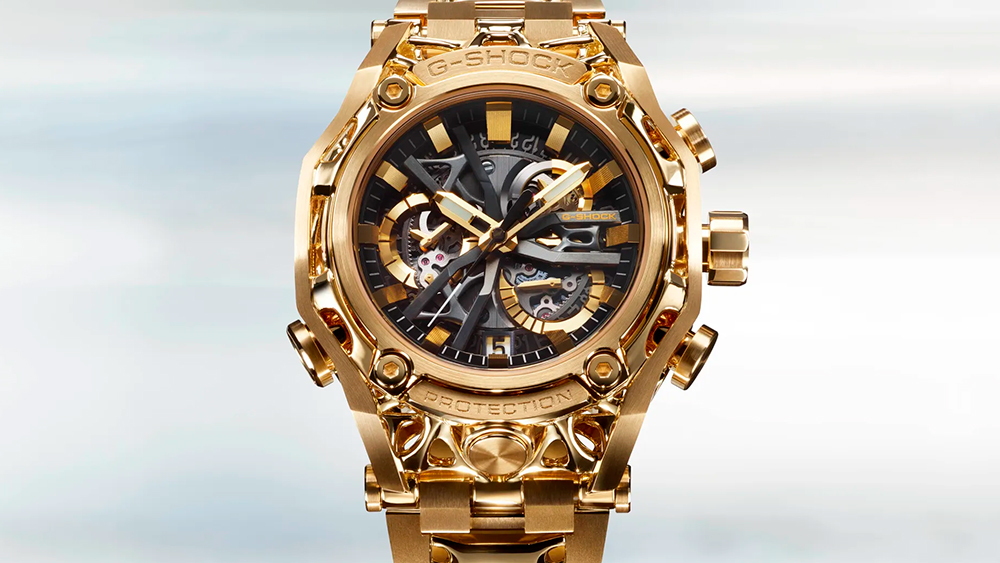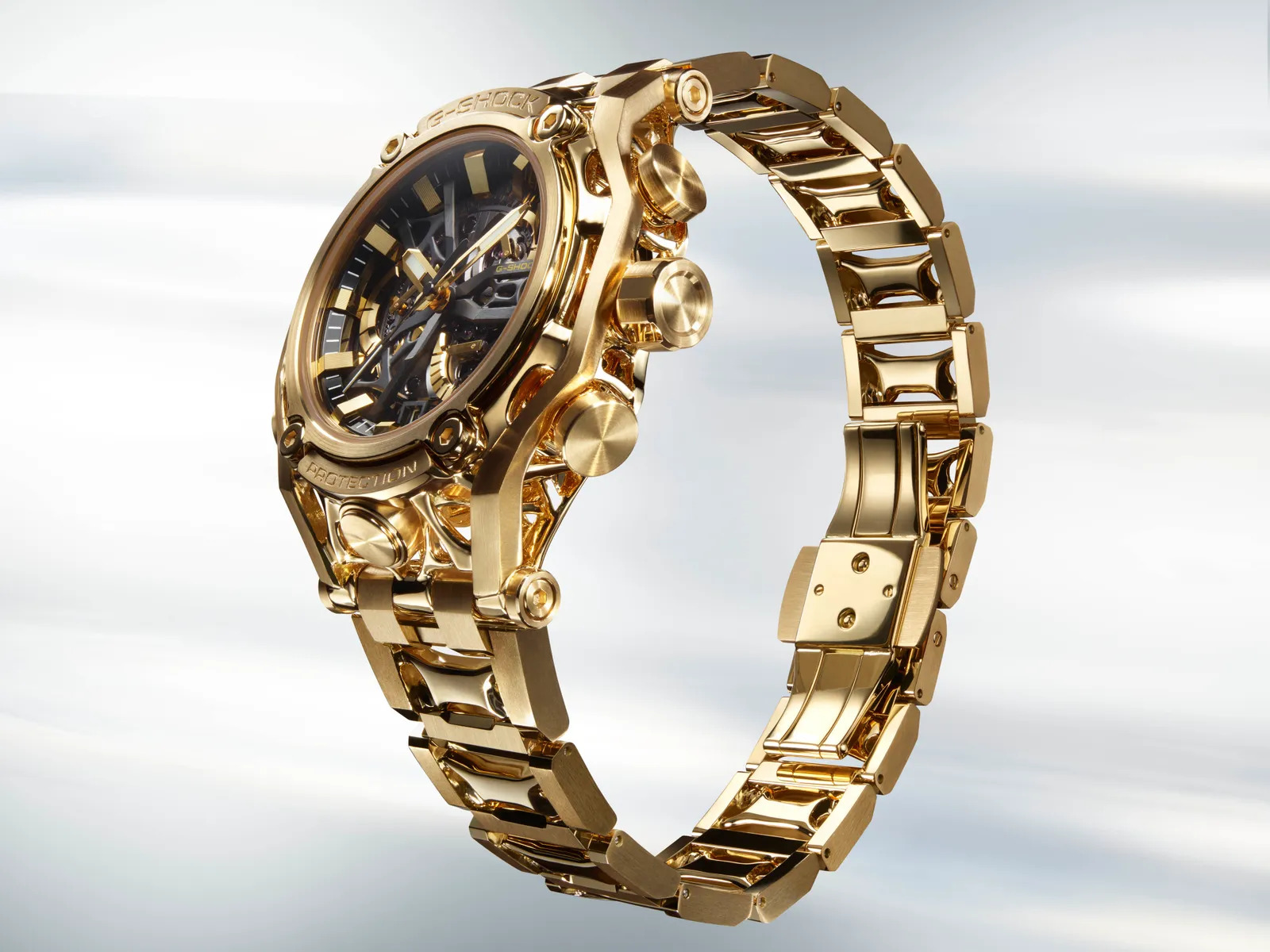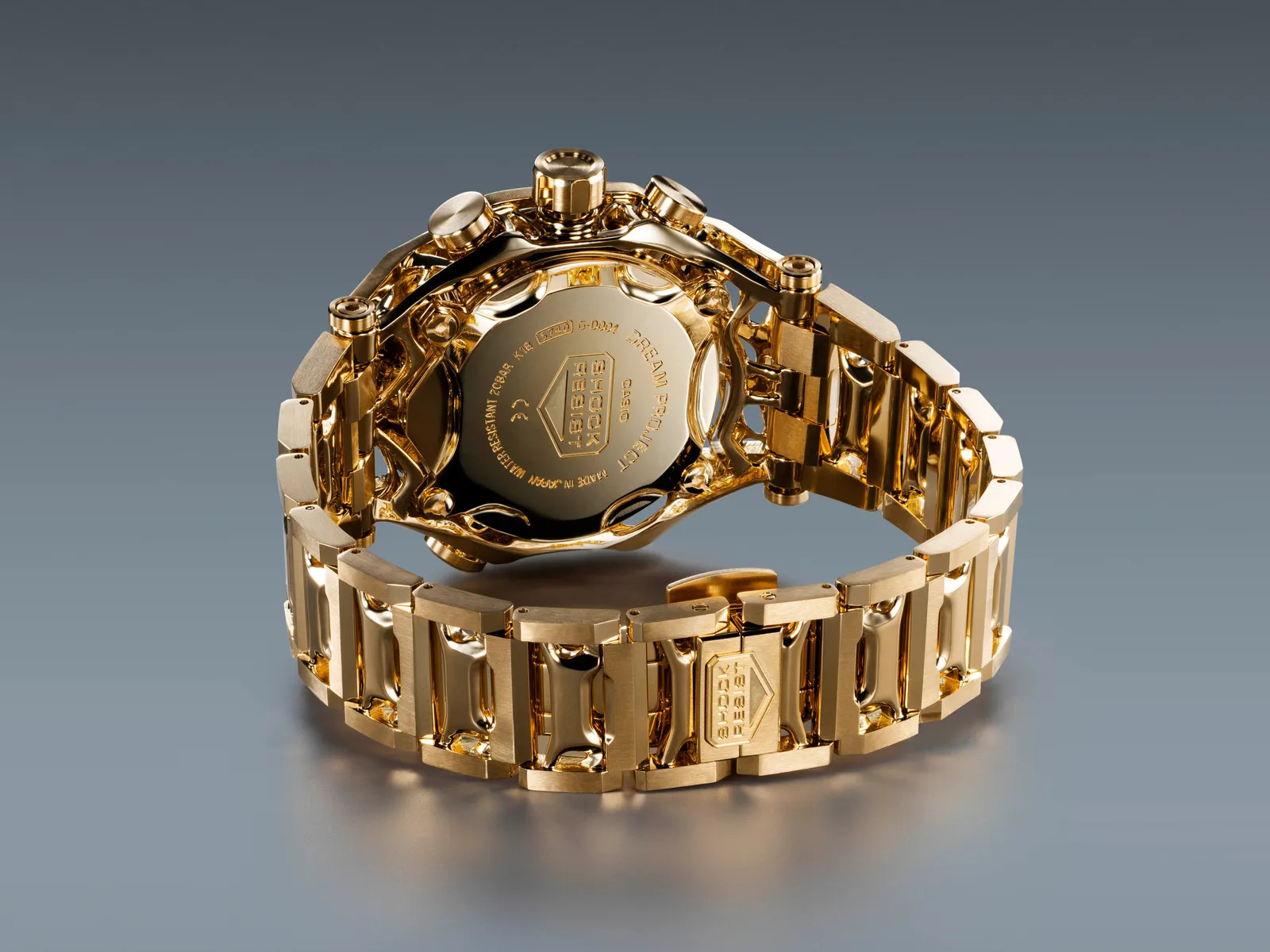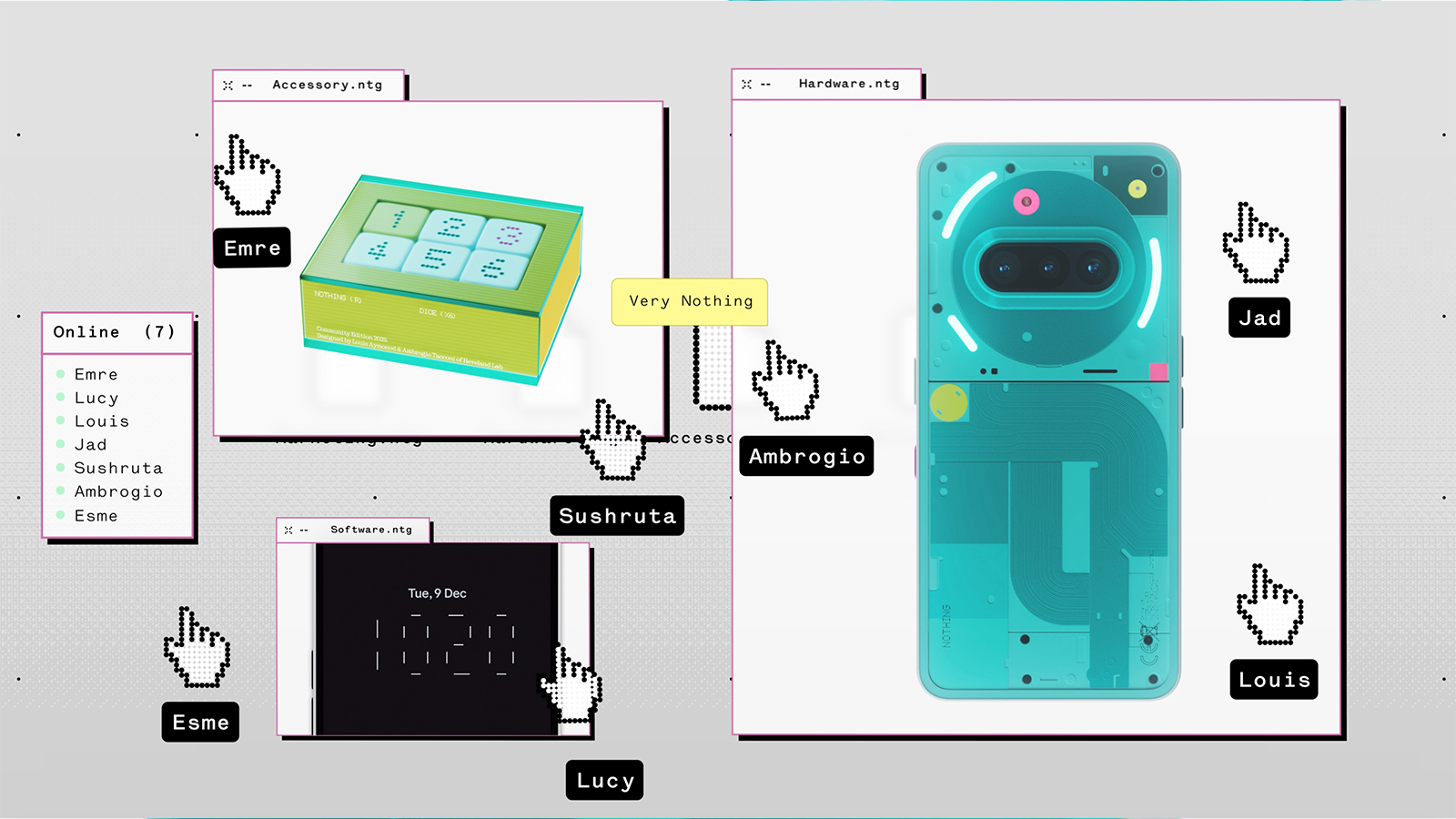
Sometimes it might seem that the main use of AI is for creating nightmarish apocalyptic images and dodgy celebrity mashups, but machine learning algorithms are being put to innovative use in product design. And one of the most glorious examples so far is the ludicrously extravagant Casio G-Shock G-D001, the Japanese brand's latest 'Dream Project'.
With the case, bezel and band employing eighteen-karat yellow gold, the one-off creation is hardly an everyday timepiece. In fact, it sold for $400,000 at auction. But the design is so wonderfully complex and organic in appearance, that it really does look like something that a human might not have designed alone (see our recent Apple Watch Series 9 review for a more affordable smart watch of a different kind).
Back in the 1970s, the Casiotron QW02 was the future. the first Casio watch had a futuristic-sounding name and broke new ground for quartz digital timepieces. Nearly fifty years on, the brand is still looking to the future, now incorporating AI into its design process.
The one-off G-D001 was created to mark 40 years of the G-Shock brand, and it became the most expensive Casio watch yet when it sold at auction. The watch features a solar-powered six-channel radio that can set the time using radio waves (gallium solar panels are located around the dial and the ring glows at the press of a button).


As for the design, there's something about it that does look somehow beyond human. The branch-like forms leave big gaping holes of negative space, with parts of the bezel looking almost as if they are separate from the case. Casio says all that air has a practical purpose, reducing the weight of the watch while also making it shock resistant without the need for resin buffering.
We've started to see a variety of companies talk about using AI to innovate in new products, although it's not always clear what role algorithms played. Casio says that it fed data to an AI model about how impacts occur when watches are dropped, all gathered from 40 years of G-Shock development. Based on that data, the AI generated a 3D model. Casio's designers then made manual tweaks to the design "to breathe life into the suggested form".
Crucially, the project, which builds upon an initial 'Dream Project' that Casio undertook five year's ago for the 35th anniversary of G-Shock, uses generative design as part of a collaboration with human designs and skilled craftspeople. The AI provided inspiration for an optimised exterior design for the full-metal shock-resistant structure, but it came down to human craftspeople to hone it make it a reality.
Daily design news, reviews, how-tos and more, as picked by the editors.
For more on watch design, see our comparison of Apple Watch Ultra vs Ultra 2. See below for the best current prices on the latter.

Joe is a regular freelance journalist and editor at Creative Bloq. He writes news, features and buying guides and keeps track of the best equipment and software for creatives, from video editing programs to monitors and accessories. A veteran news writer and photographer, he now works as a project manager at the London and Buenos Aires-based design, production and branding agency Hermana Creatives. There he manages a team of designers, photographers and video editors who specialise in producing visual content and design assets for the hospitality sector. He also dances Argentine tango.
